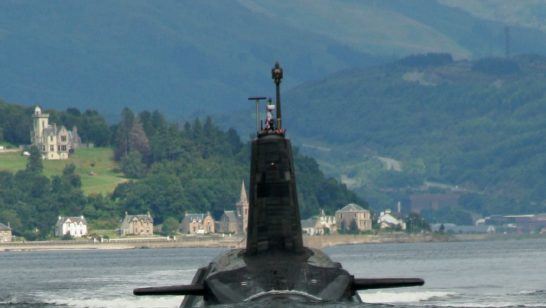
The decision by Barack Obama Administration in 2009 on cancellation of the plan of deployment of strategic DMD sites in Czech Republic and Poland was conducive to cooperative US-Russian endeavor in developing BMD. The new Phased Adaptive Approach to missile defense in Europe (PAA) was welcomed in Moscow as a more moderate and prolonged program which leaves the possibility of cooperation as was agreed in Lisbon in 2010. However, as is known in Stage III and IV anti-missile system in Europe may acquire strategic capabilities – a potential of intercepting strategic intercontinental ballistic missiles (ICBMs) and submarine-launched ballistic missiles (SLBMs).
Moscow’s insistence that the European BMD should not be directed against the Russian Strategic forces would in fact come to a new treaty on limiting the ABM systems. Such a treaty has to be ratified by the US Congress which is highly improbable in its current composition. However, both sides could probably consider reducing the level of their demands with respect to an eventual deal on this issue. Within such logic, for instance the US/NATO side would agree to refrain from deploying BMD elements in the Baltic Sea, whereas Moscow would accept the executive power declaration on their non-orientation against Russia’s strategic deterrent. In 2002, the declaration adopted in Rome significantly diminished Russia’s concerns regarding relations with NATO – and this without any ratification procedures on national level.
Nevertheless, Russia’s main concern is about the open-ended nature of PAA program and US reluctance to provide any legally binding guarantees that it will be limited so as not to ever affect Russian strategic deterrence. As an another alternative there emerged a concept of joint BMD development, deployment and use (Russian idea of “sectoral defense”). However this idea was deadlocked due to the fact that Russia is not and is not planning to be a member of NATO. NATO proposed joint data detection system, but for Russia this was not enough to alleviate concerns about future US/NATO interception capabilities.
Further unilateral deployment of NATO missile defense would undoubtedly raise political tensions and fortify the opposition on both sides to any military and security cooperation between Russian and the West.
Meanwhile, preventing political crises related to missile defense requires cooperation of the great powers on this issue. The strategic situation is changing radically due to the fact that Russia has embarked on a big defense program of its own – Air-Space Defense, which however is predominantly directed against the US/NATO offensive systems. However under some circumstances it might present new opportunities for more equal cooperation.
In the first stages, the cooperation could mainly focus on the integration of missile attack warning systems of the US and Russia. The integration of information systems is of key importance in terms of effective use of any missile defense systems. The space echelons of Russia’s missile warning system are much less efficient than their US counterparts. However, the probability of missile launch detection by space echelons is less than 100 percent. By contrast, the radars of Russia’s missile attack early warning systems in the vicinity of Аrmavir (Russia) have unique capability to detect missiles launched by Iran: this radar detects it in 100-110 seconds as it progresses along its flight path, while in case of north-westward operational launches the detection speed of the radar is even higher. This is beyond the capability of any existing radars of the US missile early warning system. Basing radars in Turkey (which has been decided), or any Arab state near Iran would be prone with serious political risks in view of the recent developments in the MENA region.
Data and information from radars and satellites would be pooled and shared in one or more Cooperation Centers staffed jointly by U.S./North Atlantic Treaty Organization (NATO) and Russian officers working together to provide an enhanced threat picture and notification of missile attack. NATO and Russia would pool data and information derived from a network tying together their respective satellite and radar sensors and those of other participating states.
Data from NATO/U.S. satellites and radars and from Russian satellites and radars would go to their respective Command and Control Centers. But the information would also go in real time to the Cooperation Centers subject to prior screening or filtering to protect sensitive data and information by each party. This shared data would be fused in the Cooperation Centers to give all parties an enhanced threat picture and notice of ballistic missile attack. This fused data and information would in turn be passed in parallel to both the NATO/U.S. and the Russian Command and Control Centers.
NATO and Russia already have operational experience in this type of cooperation. Before 2008, the NATO-Russia Council (NRC) led several missile defense simulations, each designed to test techniques of data exchange. Besides, in the conventional air safety and security domain, there is the Cooperative Airspace Initiative under the NRC.
Follow-on steps could include more profound cooperation projects. The parties could share information of other Russia’s missile early warning radars looking south and east, as well as of the state-of-the-art radars of Moscow A-135 missile defense complex (Dunai-3U, Dunai-3M and Don-2N) which ensure target detection at several thousand kilometers, target tracking and anti-missile guidance.
It would be most reasonable to start the cooperation in this area with the immediate revival of the Joint Data Exchange Center (JDEC) project for exchanging and storing missile launch data of global dimension. The decision to establish the JDEC was taken 12 years ago by the then US and Russian presidents. This Center could eventually evolve into a Global Center for early warning and monitoring missile launches on a real-time basis. A similar center could be built in Brussels to forge a parallel NATO-Russian link.
In addition to that, the suspended series of joint US/NATO-Russia TMD computer exercises should be resumed with a prospect to extending these exercises to actual test ranges and beyond the theatre scale. As regards intercept systems, Russia’s advanced experience in the development of unique software for inbound missile detection, warheads selection among decoys and despite jamming, as well as other developments could be of substantial use. In addition, Russia has a strong test range infrastructure, including a network of radar, optical-electronic and telemetric units that are not available in Europe.
In the longer term, it may be of crucial importance for the transformation of nuclear deterrence: joint missile defense represents a transition to some kind of allied relations, which naturally transcends and removes mutual nuclear deterrence even with relatively large nuclear forces remaining operational.
It is possible that the Iranian missile threat may be eliminated under various scenarios that are not examined here. Yet, the said consideration should not lead to withdrawal from the cooperation on BMD projects. Their value is much broader, than just countering missile threats of Iran and North Korea. Cooperative anti-missile systems are essential as an element of advanced great powers’ joint strategy against global nuclear and missile proliferation, as well as common efforts in transforming mutual nuclear deterrence as a basis of NATO-Russian strategic relationship.
The opinions articulated above represent the views of the author(s), and do not necessarily reflect the position of the European Leadership Network or any of its members. The ELN’s aim is to encourage debates that will help develop Europe’s capacity to address the pressing foreign, defence, and security challenges of our time.



